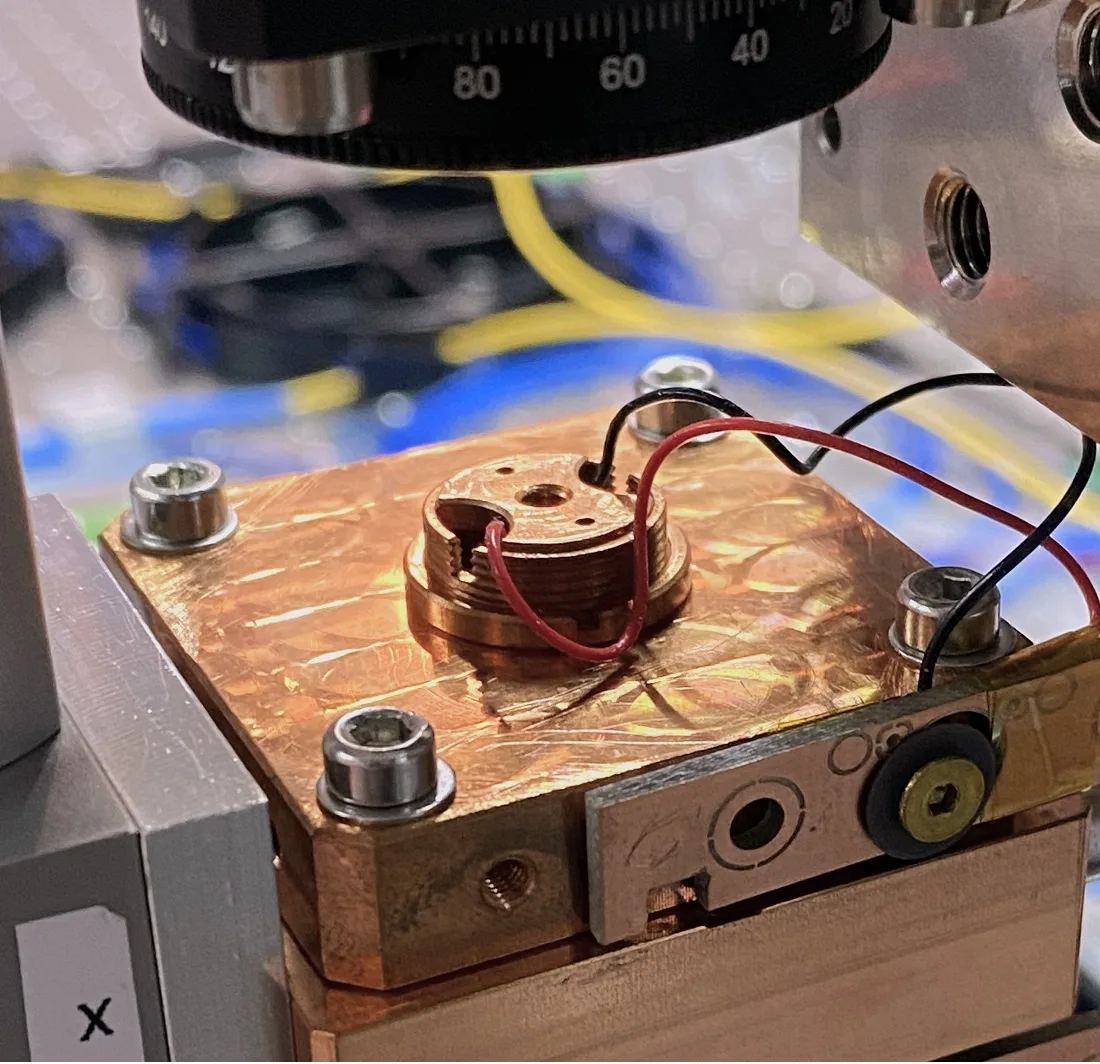Researchers at the University of Copenhagen’s Niels Bohr Institute have developed a new method for creating quantum memory. They have created a small drum that can store data sent with light in its sonic vibrations, and then forward the data with new light sources when needed. This could pave the way for an ultra-secure internet with incredible speeds. The drum is made of a special ceramic material and when hit with a laser, it vibrates quickly, allowing quantum mechanics to come into play. This new form of “quantum memory” could be fundamental for sending quantum information over distances.
Quantum Memory: A New Frontier in Quantum Computing
Researchers at the University of Copenhagen’s Niels Bohr Institute have developed a novel method to create quantum memory. This method involves a small drum that can store data sent with light in its sonic vibrations, and then forward the data with new light sources when needed. This innovative approach to quantum memory could potentially pave the way for an ultra-secure internet with remarkable speeds.
The quantum drum is a small membrane made of a ceramic, glass-like material with holes scattered in a neat pattern along its edges. When the drum is struck with the light of a laser, it begins vibrating at such a rapid and undisturbed rate that quantum mechanics come into play. This property has long since caused a stir by opening up a number of quantum technological possibilities.
Translating Light Signals into Sonic Vibrations
The researchers have demonstrated that the drum can play a key role for the future’s network of quantum computers. They have created a new form of “quantum memory” by converting light signals into sonic vibrations. Prior to the data-carrying light signal hitting the quantum drum membrane, an “auxiliary laser” ensures that the membrane’s natural vibrations, which come from ambient conditions, are brought under control. This stabilizes the diaphragm with a drum beat that is at the exact frequency it likes best, a phenomenon known as resonance.
Once data-filled light hits, its signal becomes part of the drum’s vibrations. Here, they can be stably preserved in a kind of sound memory prior to being sent onwards in a third laser, which is shot at the drum and mirrored out in a cable with data from the original light signal encoded.
Quantum Data Storage and Transmission
In a recently published research article, the researchers have proven that quantum data from a quantum computer emitted as light signals can be stored as vibrations in the drum and then forwarded. Previous experiments demonstrated to researchers that the membrane can remain in an otherwise fragile quantum state. And on this basis, they believe that the drum should be able to receive and transmit quantum data without it “decohering”, i.e., losing its quantum state when the quantum computers are ready.
“This opens up great perspectives for the day when quantum computers can really do what we expect them to. Quantum memory is likely to be fundamental for sending quantum information over distances. So, what we’ve developed is a crucial piece in the very foundation for an internet of the future with quantum speed and quantum security,” says postdoc Mads Bjerregaard Kristensen of the Niels Bohr Institute, lead author of the new research article.
Overcoming Noise in Quantum Data Transmission
When transferring information between two quantum computers over a distance, the signal will quickly be drowned out by noise. The amount of noise in a fiber-optic cable increases exponentially the longer the cable is. Eventually, data can no longer be decoded. The classical Internet and other major computer networks solve this noise problem by amplifying signals in small stations along transmission routes. But for quantum computers to apply an analogous method, they must first translate the data into ordinary binary number systems, which would slow the network and make it vulnerable to cyber-attacks.
Quantum-secured Connections and the Future of Quantum Internet
The researchers hope that the quantum drum will be able to assume this task. It has shown great promise as it is incredibly well-suited for receiving and resending signals from a quantum computer. The goal is to extend the connection between quantum computers through stations where quantum drums receive and retransmit signals, and in so doing, avoid noise while keeping data in a quantum state.
If successful, the stations will also be able to extend quantum-secured connections, whose quantum codes could also be lengthened by the drum. These secure signals could be sent over various distances, whether around a quantum network or across the Atlantic, in the quantum internet of the future.
External Link: Click Here For More

